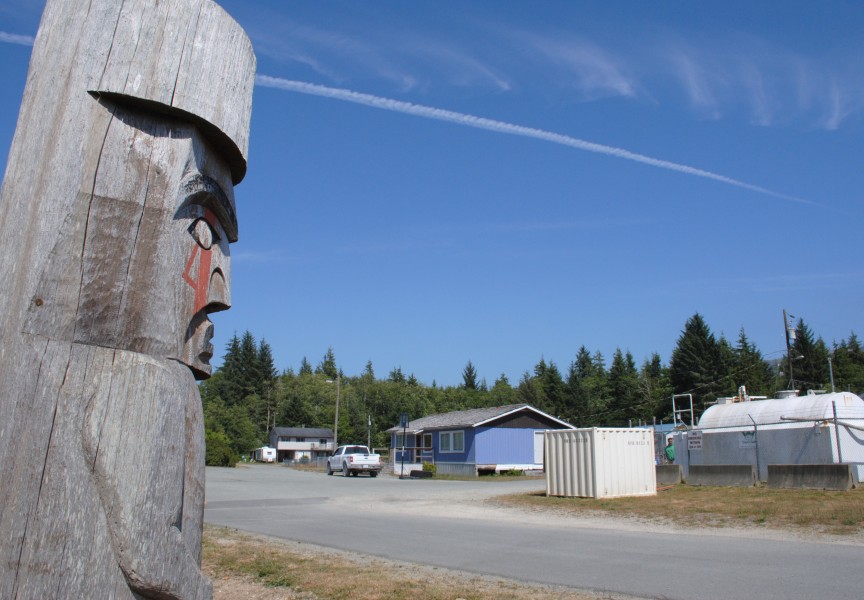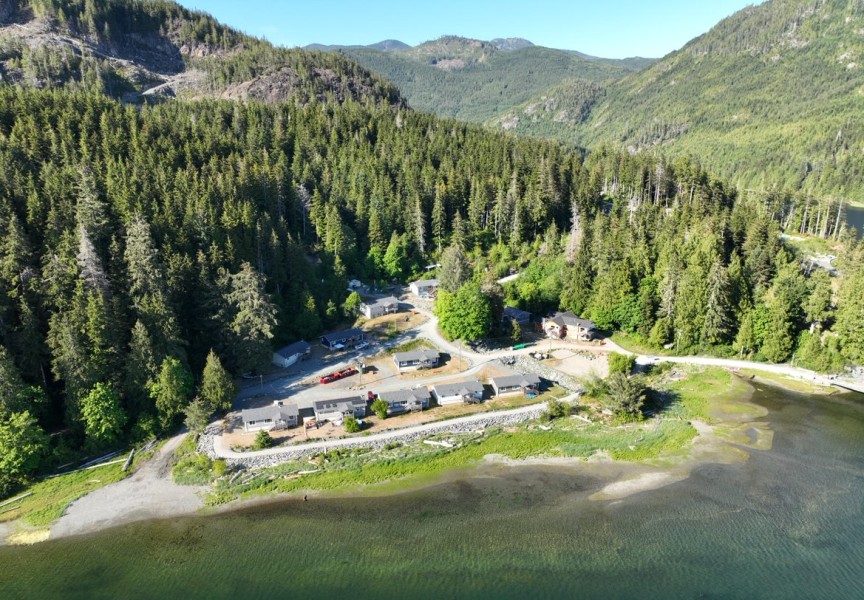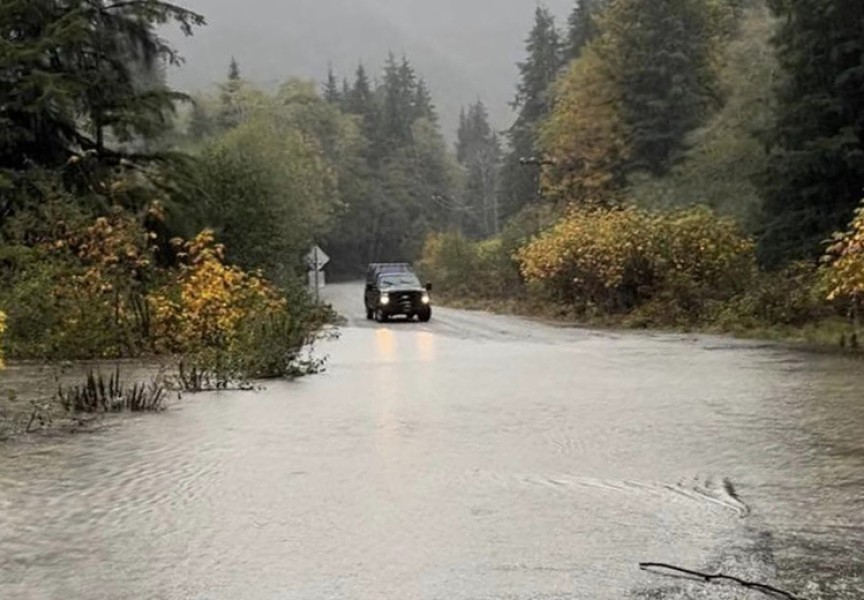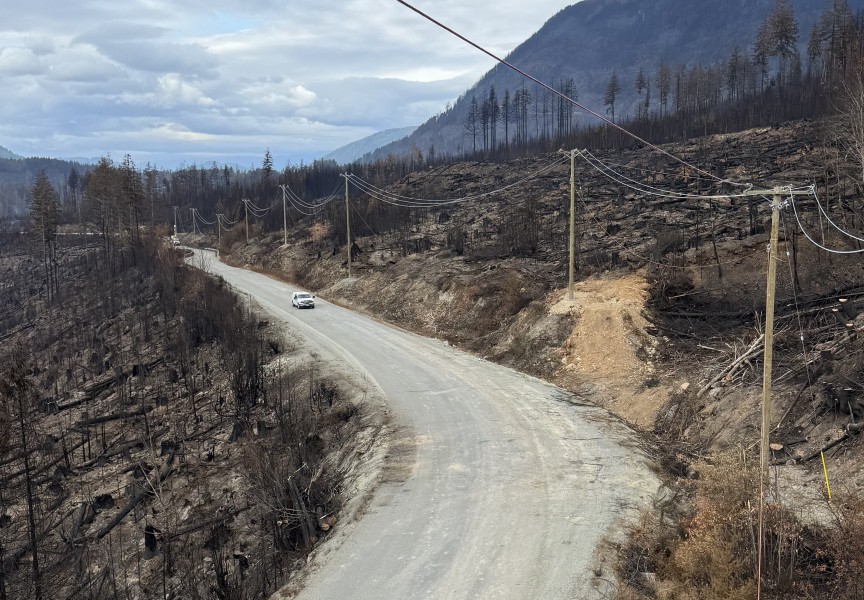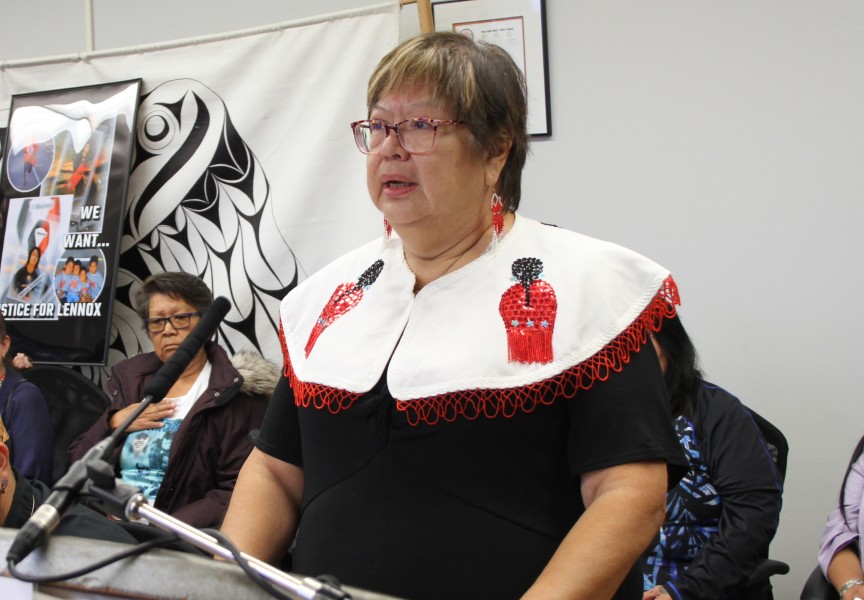After decades of lobbying – and multiple fatalities – construction work on the road to Bamfield is beginning, with a hard surface over the entire 77-kilometre route expected to be complete in a year.
On Oct. 18 leaders from the region’s forestry companies, governments and First Nations gathered at the Blenheim Gravel Pit with golden shovels in hand, marking the start of the heavy lifting that will lead to a safer road to Bamfield and its surrounding communities. Hosted by the Huu-ay-aht First Nations, the gravel pit is the first of five planned to be used for building shoulder sections of the road that runs south of Port Alberni.
Huu-ay-aht Chief Councillor Robert Dennis Sr. explained that the gravel pit is within the area where the First Nation’s people lived for centuries. He said that an improved road into the territory is key to any development.
“This is going to change how we do business in our land,” said Dennis. “This means that we no longer have to depend on forestry, or just depend on fisheries. We can now diversify our economy.”
“When our nation says we are open for business, we can say that because the hereditary leaders give the head nod to opening our lands, to continue our historic ties with our neighbouring tribes,” said Tayii Ḥaw̓ił ƛiišin (Head Hereditary Chief Derek Peters). “The objective of our hereditary leaders has always been to work closely with government, local governments, federal and provincial governments, business and industry.”
A harder, more durable, chip sealed surface is expected to cover the road by the fall of 2022. This is a one-and-a-half-inch combination of layers of liquid asphalt and rock chip, explained Kevin Gordon, senior project manager with Parsons, the contractor undertaking the road resurfacing.
“They spray a layer of asphalt, then they put rock chip on top,” he said. “They roll it, then they put another layer of asphalt - the liquid, not the mixed rock.”
The chip sealed process has benefits over pavement, noted Gordon.
“It’s flexible, so it will take, whereas pavement is rigid, you get those cracks,” he said. “This is more flexible, so it can take some of the wear and tear.”
Designs that have been underway over the last year also entail paving approximately 15 kilometres of the road, covering steeper sections that require a harder surface. This additional paving work is expected to be complete by the fall of 2023.
The route will also be widened to eight metres in most parts, explained Gordon, with signs alerting drivers to curves and steel barriers to improve safety.
The chip sealing is expected to start in April, but over the wetter fall and winter months gravel can be placed on the shoulders.
“By the end of the winter, in early spring, we’ll have all the gravel in place so the contractors will be able to move ahead quickly,” said Gordon, noting that sections under construction will be limited to a single lane as the project progresses. “When they do it they can work on one side of the road, so there will be single-lane traffic in sections, but they will be moving fairly quickly, like normal highway construction.”
The project is budgeted to cost $30.7 million, including $25.7 million from the provincial government and $5 million from the Huu-ay-aht, a financial injection that was the first to be committed to the road upgrade, said Mid Island-Pacific Rim MLA Josie Osborne.
“This is laying a strong foundation for the community of the Huu-ay-aht, for Anacla, for Bamfield, for the people of the Alberni Valley region out to the west coast,” said Osborne, who is also B.C.’s minister of Municipal Affairs.
The Huu-ay-aht have been lobbying for an improved road to Bamfield and their neighbouring village of Anacla since the early 1970s, said Dennis. Countless people have lost their lives on the treacherous passage, which becomes significantly more hazardous during the heavy rains each fall and winter, while dust can be blinding for drivers in the dry summer months. Eight Huu-ay-aht members have lost their lives on the road, including ƛiišin’s grandfather, the late Tayii Ḥaw̓ił Art Peters.
Years of hopeful meetings with government officials turned to action after the tragedy of Sept. 13, 2019, when a bus with 45 University of Victoria students and two teaching assistants slid off the road, rolling down an embankment. Students Emma McIntosh Machado and John Geerdes, both 18, lost their lives, on a journey that was planned to be an annual trip to the Bamfield Marine Sciences Centre.
In November of that year Premier John Horgan visited the crash site and came to Anacla to meet with Huu-ay-aht leaders, committing to a plan to improve the road. Bamfield Main is owned by the province and forestry companies, a fragmented management that has been cited as a challenge to pave the road in the past. But in the fall of 2019 both Western Forest Products and Mosaic sent letters of endorsement to the province as the urgency of improving the road’s safety escalated.
Bob Beckett is director for the Alberni Clayoquot Regional District’s Electoral Area A, which includes Bamfield.
“Previous governments failed us, and this government came to the table working with Huu-ay-aht to come through with this,” he said.
Currently 85 per cent of Huu-ay-aht members live away from their home territory, but ƛiišin hopes that an improved road will enable more of his people to consider returning to the birthplace of their ancestors.
“There was a time when we fought hard over many years to try to get government representatives to come set foot on our soil,” noted ƛiišin. “Things have changed and things are going in the right direction now.”
North of Coleman Creek a portion of Bamfield Main lies in Tseshaht territory, leading the Huu-ay-aht to reach out to their neighbouring First Nation for approval in upgrading the road. On Oct. 18 Tseshaht hereditary and elected leadership were present for the ground-breaking event.
“You’ve heard a lot about reconciliation, about Huu-ay-aht reconciling with the province, the ACRD and Bamfield and the City of Port Alberni, but what’s really exciting with our Ha’wiih and our council is us reconciling amongst ourselves as nations,” said Tseshaht Chief Councillor Ken Watts. “I look forward to the invitations to the House of Huu-ay-aht, inviting our citizens down and not having to worry about driving the road.”









